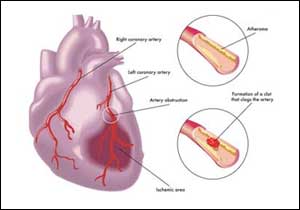- Home
- Editorial
- News
- Practice Guidelines
- Anesthesiology Guidelines
- Cancer Guidelines
- Cardiac Sciences Guidelines
- Critical Care Guidelines
- Dentistry Guidelines
- Dermatology Guidelines
- Diabetes and Endo Guidelines
- Diagnostics Guidelines
- ENT Guidelines
- Featured Practice Guidelines
- Gastroenterology Guidelines
- Geriatrics Guidelines
- Medicine Guidelines
- Nephrology Guidelines
- Neurosciences Guidelines
- Obs and Gynae Guidelines
- Ophthalmology Guidelines
- Orthopaedics Guidelines
- Paediatrics Guidelines
- Psychiatry Guidelines
- Pulmonology Guidelines
- Radiology Guidelines
- Surgery Guidelines
- Urology Guidelines
Increased troponin levels after exercise may predict higher mortality and adverse CVD events

Delhi: Exercise-induced increased troponin levels above the 99th percentile after 30 to 55 km of walking may predict higher mortality and cardiovascular events in elderly long-distance walkers, according to a recent study published in the AHA journal Circulation.
Blood concentration of cardiac troponins above the 99th percentile is a key criterion for the diagnosis of acute myocardial injury and infarction. Even below 99th percentile, troponin concentrations predict adverse outcomes. After endurance exercise, the concentration of troponin are often increased but the clinical significance of the same is still unknown.
Thijs M.H. Eijsvogels, Liverpool John Moores University, UK, and colleagues examined the association between postexercise troponin levels and clinical outcomes in long-distance walkers.
The study included a cohort of 725 participants (aged 54 to 69 years; 38% women; 9% with diabetes). Troponin I concentrations were measured before and immediately after 30 to 55 km of walking.
Study participants completed a questionnaire, answering questions about CV health and prescribed medications, and they were categorized as having CVD, CV risk factors (ie, treated hypertension, hypercholesterolemia or diabetes) or no CVD or CV risk factors at baseline.
Researchers then took a 10-mL venous blood sample 2 days prior to the event and again approximately 10 minutes after completion of walking on the first day.
This study was performed during the Nijmegen Four Days Marches, the largest walking event in the world, during which participants walk 30, 40, 50 or 55 km per day for 4 consecutive days.
Also Read: Exercise based cardiac rehabilitation reduces hospitalizations in heart failure patients
Key findings include:
- During follow-up, 29 participants died and 33 had major adverse CV events.
- 27% of those who walked for a distance of 30 to 50 km had troponin I concentrations greater than 0.04 µg/L experienced a major adverse CV event, including MI, stroke, HF, revascularization or sudden cardiac arrest, or died compared with older adults with troponin levels of 0.04 µg/L or less.
- The participants in this study walked approximately 8 hours at 68% of their maximum heart rate.
- At baseline, nine participants (1%) had a baseline troponin concentration greater than 0.04 µg/L.
- After walking, troponin I concentrations increased significantly; 63 participants (9%) had a concentration greater than 0.04 µg/L.
- Of the enrolled participants (n = 725), 14% had CVD, 26% had only CV risk factors and 60% had no CVD or CV risk factors at baseline and were used as a control group.
"Exercise-induced elevation in troponin concentration may not be a benign physiological response to exercise, but an early marker of future mortality and cardiovascular events," concluded the authors.
To read the complete study log on to https://doi.org/10.1161/CIRCULATIONAHA.119.041627

Disclaimer: This site is primarily intended for healthcare professionals. Any content/information on this website does not replace the advice of medical and/or health professionals and should not be construed as medical/diagnostic advice/endorsement or prescription. Use of this site is subject to our terms of use, privacy policy, advertisement policy. © 2020 Minerva Medical Treatment Pvt Ltd